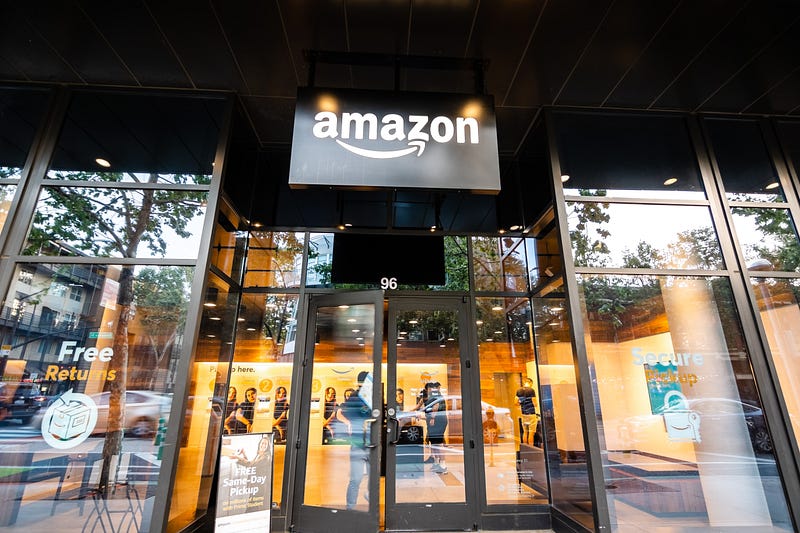Delivering Consistently High-Quality Products: Insights from Amazon
Written on
Chapter 1: The Amazon Journey
Since the mid-1990s, Amazon has been an exemplar of growth in the tech industry. The company has revolutionized the retail sector, fostered a culture celebrated in numerous books and articles, and struck gold with Amazon Web Services (AWS). My brief but impactful tenure at Amazon allowed me to witness this remarkable journey firsthand, although my recent layoff marked a challenging chapter in the company's history.
During my time there, I was part of a team responsible for managing profitability and vendor funding tools across Amazon's global operations. This team tackled both early-stage growth projects, like a unified contract system for multiple countries, and established successful products for various global marketplaces. My experience provided me with comprehensive insights into Amazon's product lifecycle, helping me understand why the company excels in delivering outstanding products consistently. Below are some key observations and lessons learned.

Chapter 2: Decision-Making Frameworks
Understanding 'One Way Door' and 'Two Way Door' Decisions
At Amazon, the terms 'One Way Door' and 'Two Way Door' are pivotal in guiding decision-making processes. A 'One Way Door' decision has almost irreversible consequences, compelling careful consideration before proceeding. For example, Elon Musk's acquisition of Twitter exemplifies a 'One Way Door' choice, as it involved substantial financial implications that were challenging to reverse.
In contrast, 'Two Way Door' decisions are those that can be easily undone. They allow for flexibility, enabling quick pivots if the initial choice proves to be flawed. Musk's quick adjustment of the blue check mark subscription model serves as a relevant case here.
Every decision at Amazon, from minor adjustments like changing a button color to major product launches like Amazon Astro, adheres to this framework. My own experience at Amazon involved making 'Two Way Door' decisions, which not only prioritized customer impact but also facilitated quicker resolutions.

The Importance of In-Depth Research
While I firmly believe in Agile methodologies, I've observed that some misuse the Agile label to justify hasty decisions made without adequate research. Before AWS was established, the core team, including CEO Andy Jassy, spent years validating customer requirements and developing a comprehensive strategy. Jeff Bezos is known for demanding thorough revisions of strategy documents, often requesting detailed changes.
These anecdotes demonstrate that investing time upfront in extensive research ultimately saves resources and enhances customer experiences in the long run.

Chapter 3: Cultivating a Culture of Continuous Improvement
Avoiding Complacency: The 'Day 1' Mentality
During onboarding at Amazon, I learned about their 'Day 1' and 'Day 2' culture. This principle emphasizes the need for ongoing improvement and vigilance against complacency. The essence of 'Day 1' is that past successes do not guarantee future results. I witnessed long-time employees maintaining the same enthusiasm and dedication as newcomers, consistently striving to innovate and enhance their work.
This relentless pursuit of excellence is why many Amazonians engage in meticulous documentation and R&D efforts to create new mechanisms for success.

Creating Mechanisms for Success
At Amazon, the development of replicable processes is crucial for maintaining high-quality output. One effective mechanism was the creation of a wiki page for every project, which streamlined onboarding and knowledge sharing. This approach addresses the challenge startups face in disseminating expertise beyond just a few star performers.
Jeff Wilke, the first CEO of Amazon’s Worldwide Consumer business, exemplified this with his introduction of Weekly Business Reviews (WBRs). These reviews have become a standardized mechanism within Amazon, promoting team collaboration and comprehensive understanding of project metrics.
Thank you for exploring my experiences at Amazon! If you're interested in discussing this topic or other aspects of product management, don't hesitate to connect with me on LinkedIn.
Special thanks to Tremis Skeete, Executive Editor at Product Coalition, for their invaluable feedback in editing this article.
Building a Culture of Innovation at Amazon: Driving Customer Success
This video delves into Amazon's commitment to fostering an innovative culture that consistently prioritizes customer success.
Amazon's 14 Leadership Principles via Jeff Bezos
Explore the foundational leadership principles that guide Amazon's approach to business and product development.